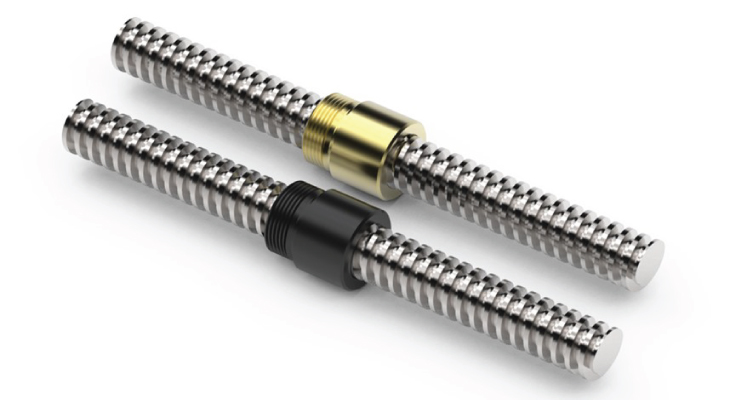Choosing the Best Acme Screw for Your Next Application

Motion and Position Control
Acme screws are a mainstay for supplying motion and positioning control in many types of machinery, including CNC milling machines, lathes, syringe pumps, linear actuators, 3D printers, and robotic systems. Regardless of the type of application, a prerequisite for ensuring that an acme screw will perform reliably is choosing a configuration based on a thorough evaluation of the load characteristics associated with a specific linear motion scenario.
Assessing Load Requirements
When choosing a lead screw, essential factors to consider include:
-
Thrust – The more significant the thrust required, the larger the screw diameter needs to be to resist the effects of compression and tension loads. Is the thrust continuous or peak in nature? Is a more robust acme nut made of bronze necessary, or will an acme nut made of resin suffice?
- Speed – Understanding the speed of the linear motion is critical to selecting a screw that will not experience "screw whip," which occurs when the rotational velocity limit of a screw is exceeded, resulting in natural harmonic frequency vibrations.
- Accuracy – How precisely does your load movement to a specific position or location need to be? In other words, how tight is your tolerance level, and how precisely does your screw need to be?
- Repeatability – Does your application require a screw that consistently and repeatedly moves a load to the same place? How accurate do you need this repeatability to be?
- Backlash – How critical is stiffness, accuracy, and repeatability for your application? In other words, how much backlash (the amount of linear movement between the screw and nut at rest) can you tolerate. Is a backlash-inhibiting mechanism necessary for the acme nut?
- Resolution – Evaluating resolution goes beyond the motor or motion controller that you are using. Screw leads, preloaded acme lead screws, breakaway torque, and the torsional twist of long screws also affect resolution. For example, you may use a less expensive motor if you use a higher resolution lead screw.
- Flange Mounting/Pinning – Because flanges must be secured to nuts, you need to determine whether to use a pin or set screw that is parallel to the screw and intersects the flange/nut mounting thread, depending on how each affects your application.
- Lubrication/Surface Coatings – Will the acme lead screw used in your application require lubrication and/or a special coating to maintain good service life? The nature of your application will determine this.
Preventing Screw Failure
Understanding the load requirements for your linear-motion application is vital to selecting an acme lead screw that will perform reliably. The most common types of failure are:
- Over Compression – When a compression load is too high, the screw becomes over-compressed, increasing the risk of buckling. This can lead to bending of the screw followed by complete tensile failure. You can avoid over-compression by decreasing the load, increasing the screw diameter, increasing the number of starts, reducing the thread size, or increasing the number of lead screws utilized.
- Stripped Screw Threads – The threads on the screw can become stripped when the screw is not appropriate for your application. Essential considerations include axial load, speed, screw inertia, torque, inertial torque, drag torque, torque-to-move, back driving, length, and end fixity.
- Stripped Nut Threads – The threads on the nut can become stripped when the nut is not appropriate for your application. Essential considerations include axial load, speed, screw inertia, torque, inertial torque, drag torque, torque-to-move, back driving, length, and end fixity.


